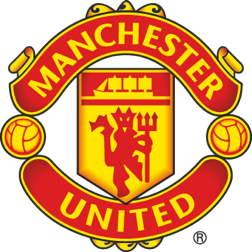What was an Old Trafford matchday like in 1910?
To celebrate the anniversary of Old Trafford’s first match, on this day in 1910, we're turning back the clock for a look at what football was like when our stadium first opened its gates.
Unlike fixtures in today's football calendar, matchdays in the 1910s would most likely take place on a Saturday, unless a cup draw forced a midweek replay or one of the major holidays provided additional opportunities. This timing was by no means a coincidence. It came as a result of an increasing number of working-class men, women and children being granted a half-day Saturday off, turning football into one of the nation’s favourite pastimes.
Due to the lack of floodlights, kick-off times would change depending on the season. To access the stadium, you would pay at the gate, unless of course you had a season ticket, and enter the ground via one of the turnstiles, pictured below. As little as six old pence, £1.95 in today’s money, could get you a standing spot on Old Trafford’s open terraces, while five shillings, nearly £20 in today’s money, would buy you a plush-covered seat in the Main Stand. Regardless of the ticket price, you would be able to enjoy an unobstructed view of the game. That luxury was denied to United fans prior to 1906, when the extension to the Sixpenny Stand at Bank Street enabled those with the cheapest tickets to see match action taking place near the touchline for the first time.
MAKING AN ENTRANCE
Patented in 1893 by Salford based engineering company W.T. Ellison, ‘Rush Preventive’ turnstiles like the one above became a vital tool in ensuring United staff knew how many people had entered the ground. Renowned for their reliability, there are still seven Ellison turnstiles operating at Old Trafford.
MATCHDAY CATERING
While at the ground, instead of having a pie and listening to This is the One by The Stone Roses, you would most likely treat yourself to a hot, beefy drink made by Oxo, whilst being entertained by a local brass band. If you were unlucky enough to be standing at the top of the uncovered terraces, you could lose your hat to the stiff breeze unless you tied it with your scarf!
The contract pictured above was for a lucrative advertising and trading deal with Oxo. Signed on 27 September 1910, it brought an extra £100 to the club in revenue every year.
KEEPING ORDER
Crowd management in the 1910s consisted mainly of police officers guarding the pitch. Despite the presence of crush barriers, Old Trafford’s open terraces could get highly overcrowded. So, if you were unlucky enough to faint, you would be picked up by the crowd and ‘crowd-surfed’ to the bottom of the stand, where you would be cared for by St. John’s Ambulance volunteers. As for crowd trouble, surprisingly there was hardly any, and it would come as a shock to the modern eye to see home fans mixing with away ones.
RULES OF THE GAME
Astonishingly, rough and dangerous play, including shoulder charging a goalkeeper in possession of the ball, was still permitted. However, despite an increased risk of injury, no substitutions were allowed. This meant teams were often left with just ten or even nine players to finish a match unless a ‘magic sponge’ treatment managed to work its wonders. The rules of the game also allowed the ‘keepers to handle the ball anywhere in their own half and move around when facing a penalty kick. To add to the confusion, if you went to Old Trafford in 1910, you might struggle to identify the players on the pitch as shirts did not feature numbers until the 1930s.
THE HALLOWED 'TURF'
As for the state of the pitch, apart from the obvious lack of grass, a modern fan would probably spend most of the first half trying to figure out what was wrong with it. The Eureka moment would have come after you had realised there was no penalty arc. Besides the pitch looking unrecognisable, you would possibly smirk at the sight of the referee kitted out in a three-piece suit, having only swapped long trousers for knee-length shorts. Another cause for confusion would perhaps be the scoreboard, featuring nothing but a series of letters and numbers. You would have to refer to the matchday programme to crack the code!
The 1910s tactics would definitely impact the enjoyment of the game for most. The ‘pyramid’ formation of two full-backs, three half-backs and five forwards, as well as the three-player offside rule would most likely raise the eyebrows of a 21st-century supporter. Unlike modern footballers, who only have to be level with the second-to-last player, the Edwardian attacker was considered offside unless three players from the opposing team were in front of him. It resulted in teams often adopting the ‘offside trap’ as a defensive strategy, causing frequent stoppages to the game and reducing the number of goals. A huge difference from the high-tempo attacking game we’re used to now.




